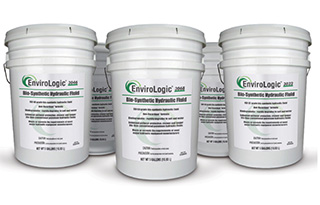Perhaps a third of the U.S. workboat fleet are already using environmentally acceptable lubricants (EALs), and the time is here for all operators to be thinking about the requirements for phasing in EALs, experts with the U.S. Environmental Protection Agency and industry said Tuesday at the International WorkBoat Show.
“Over time, as with a lot of our EPA regulations, people will figure out how to deal with the requirements,” said Jack Faulk, of the EPA’s office administering the Vessel General Permit (VGP) program.
Part of that program that began in December 2013 is operators reporting the use of EALs in steering, hydraulic and other systems – and when they are not used, the rationale for delay and when they might be adopted after the next dry docking.
“The time for reporting is banging on the door for 2015,” said Mark Miller, executive vice president with RSC BioSolutions, Charlotte, N.C., who moderated the panel on EALs.
Vessel general permits call for use of EALs in “all oil-to-sea interfaces” on vessels, and that’s brought in whole new families of lubricants: synthetic esters, poly alkylene glycols, and poly alphaolefins.
“We’re dealing with different chemistries,” said Benjamin Bryant, marine market manager with Kluber Lubrication North America LP.
Along with their lesser impact on water quality and the environment, EALs come with distinct operational advantages, such as higher viscosity indexes that mean longer life and better efficiency. But their different properties and best uses mean operators must educate themselves about the best applications.
Maintenance is critical. “EALs tend to attract and hold water more,” said Erica Newser, chief operator officer with Compact Membrane Systems, Newport, Del. Newser said EALs tend to hold water more tightly than petroleum lubricants “which is why a maintenance system is better than trying to manage them acutely.”
Dealing with the water is not a sign of bad seals but just the atmosphere’s effect on systems, Bryant said: “You’re in a marine environment, it’s full of humidity.”
Many equipment manufacturers are working hard to account for new EAL requirements for their products. For example, there should be no new sterns tubes being produced without an EAL” because there are enough compliant lubes now available, Bryant said. Other drive and control components like thrusters are taking longer because of their more complex seals, and manufacturers’ concern to “not cause problems for operators down the road,” he said.
When it comes to an accidental spill of EALs, reporting requirements are still the same, panelists said. The vessel general permit deals with operational discharges, but “once you get into an accidental leak, you’re back to OPA 90,” the federal Oil Prevention Act of 1990, Bryant said.




